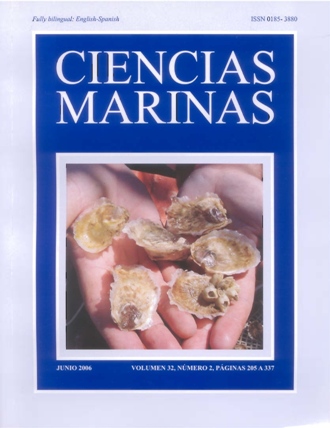Evaluation of culture enclosures for the mangrove oyster Crassostrea rhizophorae suspended from raft and long-line systems
Main Article Content
Abstract
We evaluated the growth and survival of the mangrove oyster Crassostrea rhizophorae (30 mm maximum length) reared in two suspended-culture systems (raft and long-line) using three types of enclosures (oyster enclosures, lantern nets and enclosures based on crates used to transport fish), at a density of 750 ind m–2, in La Restinga Lagoon, Margarita Island, Venezuela, over the course of six months. No significant differences were found in shell growth (length and mass) due to the system and enclosures used; however, raft-cultured oysters showed better tissue growth. At the end of the study, the oysters in lantern nets suspended from rafts obtained a tissue mass that was around 40% higher than that of the rest of the oysters cultured in the other enclosures. Significant differences in oyster survival were not observed for the raft and long-line systems used, but the cumulative survival at the end of the study was significantly higher for the oyster enclosures (52–56%) than for the lantern nets (36–39%) and fish crates (24–25%). We therefore recommend employing rafts and discarding the use of crate-type enclosures in the culture of C. rhizophorae in lagoon systems.
Downloads
Article Details
This is an open access article distributed under a Creative Commons Attribution 4.0 License, which allows you to share and adapt the work, as long as you give appropriate credit to the original author(s) and the source, provide a link to the Creative Commons license, and indicate if changes were made. Figures, tables and other elements in the article are included in the article’s CC BY 4.0 license, unless otherwise indicated. The journal title is protected by copyrights and not subject to this license. Full license deed can be viewed here.

